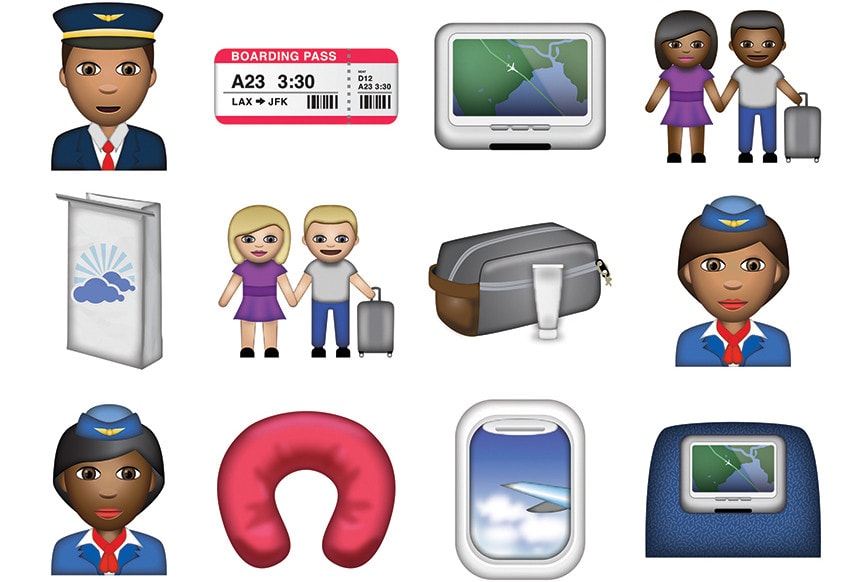Airlines Embrace Emojis in a Bid to Reach Millennials
Share

This story was originally published in the March/April issue of APEX Experience magazine.
Before emojis came along, we made do with emoticons – clever expressions made with the keystroke of a colon and an open bracket for sadness, or a semicolon and a closed bracket for a wink. Over time, punctuation fleshed out into tiny yellow faces (more colors were added later to represent different nationalities) and the range of emotions grew so wide, you probably discovered a few you never knew you had. Now, emojis have entered our lexicon.
Last year, the term “emoji” tripled in use and corporations caught on. To promote new routes to Las Vegas, for example, Norwegian Air posted an emoji-encrypted URL, enticing millennials to test their fluency. “Young people aged 18 to 34 are incredibly complex to market to,” says Charlotte Holmbergh Jacobsson, head of Communications at Norwegian. “We decided to take advantage of the target audience’s way of using emojis … to hype the destination.”
 Aer Lingus even went so far as to take inspiration from emojis for its 2015 logo redesign – for April Fool’s Day. “We recognize the unstoppable trend in the use of emojis as a sophisticated new form of communication,” the airline kidded in a blog post. “By having our logo pre-loaded in smartphones around the world, we can make our brand more recognizable and accessible than ever before.”
Aer Lingus even went so far as to take inspiration from emojis for its 2015 logo redesign – for April Fool’s Day. “We recognize the unstoppable trend in the use of emojis as a sophisticated new form of communication,” the airline kidded in a blog post. “By having our logo pre-loaded in smartphones around the world, we can make our brand more recognizable and accessible than ever before.”
Skype one-upped static emojis with short video clips of movie and TV show catchphrases it calls “Mojis” to crack the burgeoning Indian market. “Bollywood produces more films than anywhere else,” says a Skype spokesperson. “With Skype mojis, [users] can share some of the funniest, craziest and most iconic moments from some of the best Bollywood TV and movies from Eros and Yash Raj. This is just the beginning; we’re excited to release more partners and content in the future.” Beyond Bollywood, Universal, Paramount and BBC are among other big-name producers that have latched on to this trend.
 Emoji gimmicks may garner laughs and impressions (a metric for audience reach), but as a revenue generator, they have a long way to go – especially by the standards of Japanese messaging app Line. In 2014, the app raked in an unparalleled $656 million from B2C sales of games, stickers (supersized emojis) and merchandise, but also from companies and celebrities who wished to see their products in the form of a branded emoji.
Emoji gimmicks may garner laughs and impressions (a metric for audience reach), but as a revenue generator, they have a long way to go – especially by the standards of Japanese messaging app Line. In 2014, the app raked in an unparalleled $656 million from B2C sales of games, stickers (supersized emojis) and merchandise, but also from companies and celebrities who wished to see their products in the form of a branded emoji.
Branded emojis are a language that New York City-based Swyft Media understands. It creates specialized emoji keyboards for movies like The Hunger Games: Mockingjay – Part 1 and Paper Towns. “Brand engagement and brand impressions are becoming less about click-throughs and more about how people are talking about your brand,” Evan Wray, cofounder and vice-president of Swyft Media, told The Huffington Post. They are about “sharing that sentiment with friends and their network.”
Flex your emoji and movie trivia skills with this quiz.


